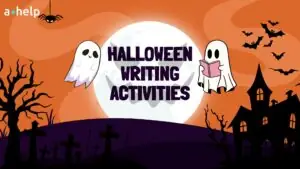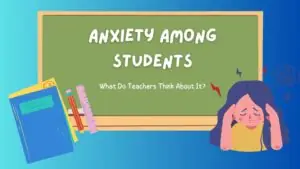
As pointed out by EdSurge, professors across the nation are confronting a wave of new challenges in connecting with their students. With remote learning coming to the forefront and AI bots such as ChatGPT on the rise, the traditional professor-student interaction is undergoing a profound transformation.

✅ AI Essay Writer ✅ AI Detector ✅ Plagchecker ✅ Paraphraser
✅ Summarizer ✅ Citation Generator
Key Takeaways
- A growing sense of disconnect: As a result of remote learning and the introduction of AI bots, many educators are finding it harder to foster meaningful connections with their students.
- A stalled transition to the metaverse: Although it was widely anticipated that the metaverse would significantly reshape the education sector, this shift has yet to occur.
- Accountability and transparency: The shift to online learning has spotlighted the importance of giving students clear feedback and maintaining transparency about grades and assignments.
A Gap in Connection
Professors, particularly those accustomed to in-person teaching, are grappling with the issue of student disconnection. Bonni Stachowiak, dean of teaching and learning at Vanguard University of Southern California, stated, “I see so many people so hungry for connection with students.”
Is Metaverse in Education A False Start?
Stachowiak’s comments also delve into the much-hyped metaverse, a virtual reality space that seemed poised to revolutionize education. However, despite the buzz, the metaverse has not made significant inroads in the education sector. Discussing Apple’s new augmented reality headset, the Apple Vision Pro, Stachowiak explained, “What that tells me is that their research has shown them how much we wish to still be able to be present.”
The Online Shift in Increasing Accountability
The pandemic-induced shift to online education has brought increased accountability in teaching practices, especially regarding student feedback. Stachowiak highlighted the need for greater transparency, asserting, “In this day and age, students need to be able to see where they stand in a class.”
She mentioned instances of “faculty who literally, you turn in one midterm, you turn in a final or maybe a paper, and students do not have any idea whether you passed or failed the class.” The move to online education has, in her view, decreased such instances, increasing transparency.
The Struggle for Connection Continues
While the challenges of digital learning continue to evolve, so too does the mission of many educators. “I got to speak to Sarah Rose Cavanagh. She recently released a book “Mind Over Monsters” about youth mental health, and it’s part memoir, part research, and she talks about ‘compassionate challenge.’ And I thought there’s really no better way than that to explain my sense of mission in teaching. I like to have it be challenging,” said Stachowiak.
As educators continue to adapt to this new era, their commitment to connecting with students and fostering a challenging, compassionate learning environment remains unflagging. The journey, though fraught with uncertainty and change, continues towards a future of education enriched by technology without losing the human touch.
Harnessing Creativity to Engage Students in the Digital Classroom
Amid the rapidly changing landscape of education, educators are exploring creative ways to keep students engaged in online learning. Here’s a look at some innovative strategies that are transforming virtual classrooms and fostering stronger connections between teachers and students.
- Interactive Quizzes: Making use of platforms like Kahoot! or Quizlet to create quizzes can make learning fun and interactive, and keep students on their toes.
- Virtual Breakout Rooms: These can be used to facilitate small group discussions or group projects, encouraging collaborative learning.
- Gamification: Turning learning into a game can help students grasp complex concepts more easily. Tools like Classcraft can be used to add a gaming layer to your class.
- Multimedia Presentations: Incorporating videos, infographics, and other multimedia into lessons can make content more appealing and easier to understand.
- Real-time Feedback: Tools such as Google Docs allow for real-time feedback and interaction, fostering a more dynamic learning environment.
- Guest Speakers: Inviting industry professionals, authors, or other relevant guests for online talks can bring a fresh perspective and boost student engagement.
- Personalized Learning Paths: Using AI and other tech tools, teachers can create personalized learning paths to cater to individual student needs and preferences, helping to keep them invested in their learning journey.
By leveraging these creative approaches, educators can keep the spark of curiosity alive, foster deep learning, and ensure every student feels seen, heard, and valued in the online learning environment.
Read more:
Writing Skills in Higher Education Deteriorate? A Professor’s View On the Problem
“The Dog Ate My Homework” and Other Excuses: Tales from the Professor’s Perspective
Online Learning Debated: 15 Crucial Reddit College Insights
Follow us on Reddit for more insights and updates.





Comments (0)
Welcome to A*Help comments!
We’re all about debate and discussion at A*Help.
We value the diverse opinions of users, so you may find points of view that you don’t agree with. And that’s cool. However, there are certain things we’re not OK with: attempts to manipulate our data in any way, for example, or the posting of discriminative, offensive, hateful, or disparaging material.